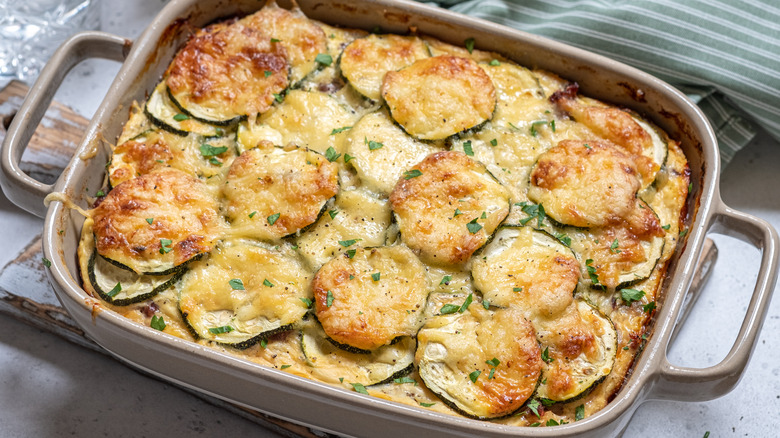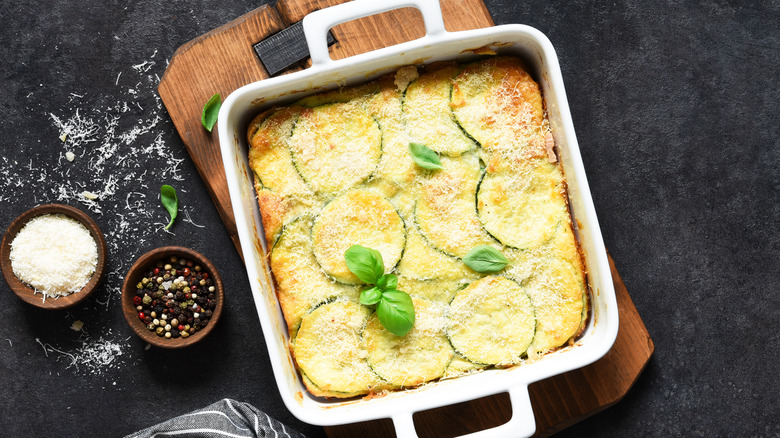Here's How To Ensure Your Squash Casserole Doesn't Turn Out Soggy
The humble casserole is the perfect form to showcase the wonder of squash. Smothered with butter and cream cheese, topped with cheddar cheese and breadcrumbs, and baked, both summer and winter squash alike are at their peak in this creamy, decadent dish. While the perfect squash casserole is tender, it should never be soggy.
The vegetable is prone to turning into mush, but thankfully, there's an easy fix. Summer squashes have a water content of up to 98%, while winter squash tends to be about 81% water. To dry them up, salt the squash prior to cooking. The mineral is known to draw excess moisture out of vegetables and is the trick to avoiding sogginess and ending up with fabulous yellow squash casserole.
After slicing the squash, sprinkle it with salt and let it sit for around 30 minutes. Rinse the squash thoroughly and pat dry before cooking. If done correctly, this method should be enough to get rid of the excess moisture in the squash. However, there are additional ways to ensure that your squash casserole is never soggy.
Extra steps to prevent soggy squash casserole
Learning the correct cooking time frame is a tip you need when working with summer squash. In our yellow squash casserole recipe, we advise you to bake the casserole for 30 to 35 minutes, and it's important not to cook it any longer. Overcooking squash makes it soggy, mushy, and unpleasant to eat. When baked, squash should be tender enough to pierce with a fork, but not overly soft.
To get the perfect texture, some people partially cook the squash prior to making the casserole. If you're taking this step, remember to undercook the squash. Otherwise, it'll end up becoming too soft when baked in the oven. Additionally, use oil sparingly when sauteing or baking the squash. An excessive amount will cause the squash to absorb it and turn into a pile of mush.
For the freshest tasting casserole, eat seasonally. When making a casserole during the colder months, opt for winter squash, and vice versa for the warmer months with summer squash. Buying and eating the squash when it's in its prime will increase the chances of ending up with more flavorful squash that's fleshy rather than water-logged.

